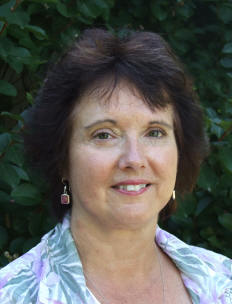 It’s the end of summer and gardeners are gathering their final harvests before putting their gardens to bed for the upcoming winter. Have you considered saving some of your seeds from this year for next spring? It is really an easy and satisfying process.
It’s the end of summer and gardeners are gathering their final harvests before putting their gardens to bed for the upcoming winter. Have you considered saving some of your seeds from this year for next spring? It is really an easy and satisfying process.
Why would you want to save seeds? First, it saves money next spring. Instead of buying seeds, which can get pricey, you already have your seeds waiting to plant. Another reason is to ensure you have seeds of your favorite cultivars in case you can’t find them next year. My favorite green bean is ‘Blue Lake 274’, an heirloom bean dating back to the mid-1800s. By saving these seeds each year, I know we will have this family favorite on the dinner table each summer. Seed saving gives you a feeling of self-sufficiency as you recycle from year to year without worry. Finally, saving seeds is a fun way to connect with friends and family to share or trade seeds from other gardens as well as experiment with new plants.
Before you rush out and pull the seeds from your plants, there are a couple things to consider. First, select open-pollinated cultivars, which will produce fruit true to the type of plant you harvest the seeds from. Unlike open-pollinated plants, hybrids (often labeled on seed packets as hybrid or F1) may not reproduce next year with the same type of plant since the new plant could look like either one of its parent plants or something new altogether. Stick with open-pollinated cultivars to be sure of what you are growing. Some open-pollinated plants are labeled "heirloom" which means these cultivars have been handed down for generations and have been proven over time.
Another consideration if you are just starting to collect seeds is to choose self-pollinated plants instead of cross-pollinated plants. Self-pollinated plants such as beans, peas, lettuce, peppers, tomatoes, and some herbs and flowers will give you true fruit next year. A cross-pollinated plant will pollinate with plants around it so you may get some interesting looking produce in next year’s garden. Squash and Brassicas (such as broccoli, Brussels sprouts, or European kale) can cross-pollinate if planted too close to each other. It won’t affect this year’s crop, but the seeds may not produce what you want next year.
Prior to seed harvesting, select the best fruit possible: large, and free of disease or deformity. How and when you gather the seeds will depend on the plant.
Peas and bean seeds are some of the easiest to harvest. Simply leave the pods on the plants until they turn brown and dry. At that time, gather the pods, open, and remove the seeds. Let the seeds dry for about a week before storing.
.JPG)
Lettuce goes to seed by flowering. The seed stalks will have a feathery appearance like a dandelion. Cut the dried seed stalks and place them in a paper bag. Simply shake and the seeds will fall off.
Tomatoes and cucumbers have wet seeds, so they require a little more work to remove the seeds from the gel. First, select tomatoes that are ripe and ready to eat. Cucumbers should remain on the vine until past the point of eating. Wait until they turn yellow and have a harder skin before harvesting seeds. Put the seeds into a jar with some water. For about four days, shake the watery seeds. This creates a mini fermentation which will help remove the gel from the seeds. At the end of the four days, strain the seeds and dry them before storing.
You can gather flower seeds as well. With Rudbeckia (Black-eyed Susan), cut off the dry seed head, air dry for another week, and simply shake the seeds loose. Helianthus, or sunflower, seeds can be saved for either spring planting or for feeding the birds in the winter. Leave them on the heads until the leaves are dry before harvesting your seeds. If you don’t want the birds getting the seeds in the fall, you may need to cover the seed heads with a paper bag while drying.
Once you’ve harvested your seeds, make sure they are free of moisture before storing. You may want to leave them on a mesh tray in a dry space for a week. Store the dried seeds in paper bags, envelopes, or clean glass jars in a cool, dry location. Be sure to label the containers with the name of the cultivar and the date harvested – trust me, you won’t remember next spring!
Don’t have any seeds to harvest this year? No problem. As you plan next year’s garden, consider using open-pollinated or heirloom seeds, staying clear of hybrids, for anything you hope to seed harvest next fall. It may be harvesting season now, but garden planning season is right around the corner.
Seed saving is a fun and fulfilling activity each fall that provides you with seeds for next spring, gives you a sense of self-sufficiency, ensures you can grow your favorite cultivars, and helps future generations by maintaining open-pollinated cultivars to share with others.